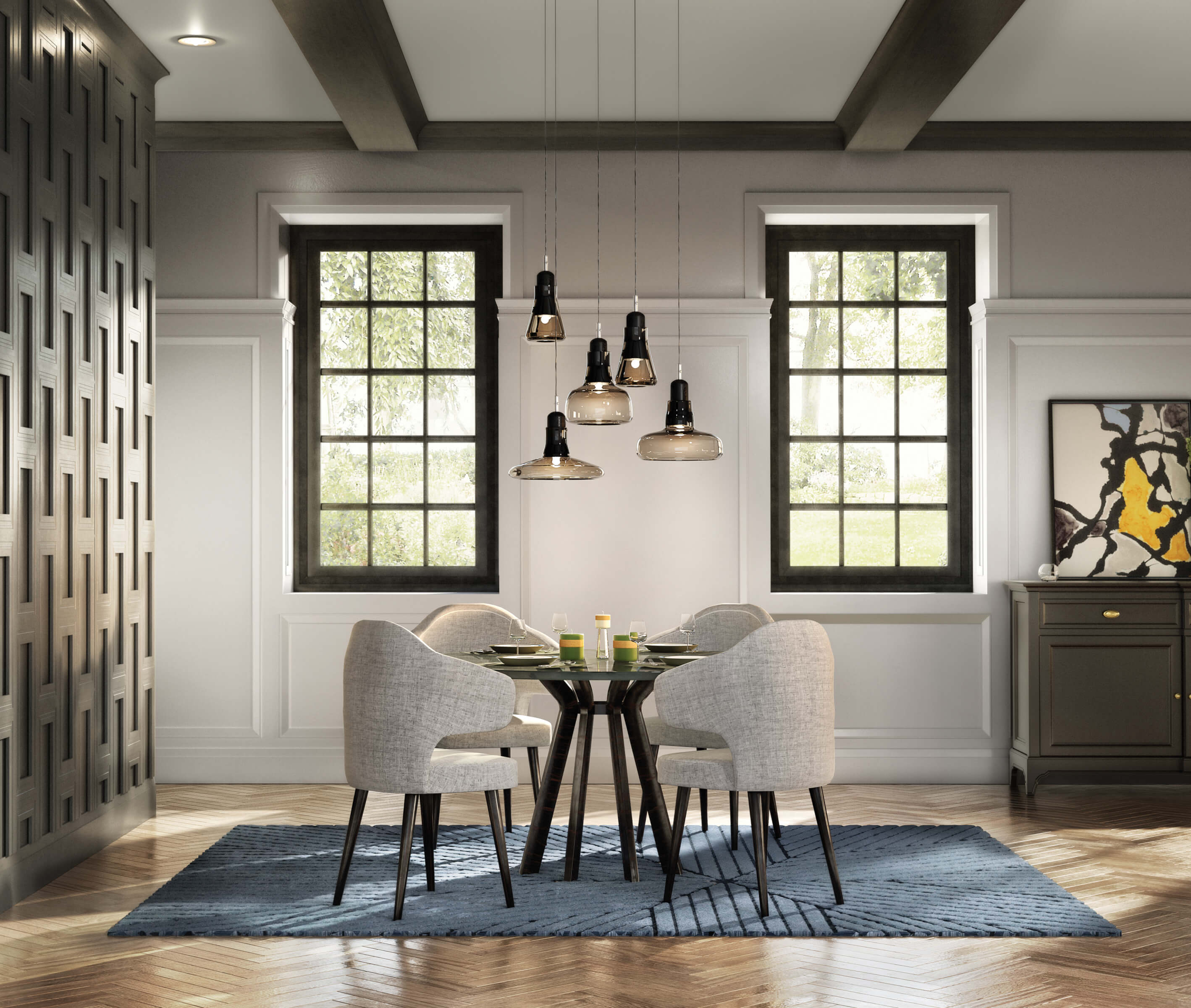About a decade ago, while selling her family’s house, Tammy Mackay learned the impact of moulding on a home’s value, first hand. As the Vice President and CEO of Moulding Warehouse in Nova Scotia, she was already an expert on the topic. But when her realtor suggested she add moulding to her home’s main rooms to set it apart from the other two identical homes for sale on her street, that knowledge was brought home in a very tangible way. “That was the only difference between our home and the other two,” says MacKay, “and we ended up selling ours for 15 per cent more.”
Thrilled with the results, MacKay bought another home to flip. “All we did to our next home was add mouldings and paint and we made $70,000 profit on that house, in 30 days.” She adds, “Adding moulding is always worth the investment. You’ll get your money back, every time.”
That’s an idea more and more Canadians are warming to—and not just for resale. “I think people are more aware of moulding than ever,” says Donna Gerrits, VP Sales & Marketing, Alexandria Moulding in Eastern Ontario. “They’re understanding the value it adds to their home, not just in terms of monetary value but also to the warmth and beauty of their home.” She adds, “That’s the biggest change that I’ve seen in the last five years, or so.”
Cleaner Lines, Modern Times
Crown moulding has traditionally been the first thing home-owners and contractors consider, when it comes to moulding. “Crown adds richness and elegance and dimension to a room,” says Michelle Downey, Director of National Accounts for Interior Mouldings and Doors, in South Central Ontario. “It helps break up that harsh edge of where the wall meets the ceiling, while adding a little sophistication and an extra finishing touch.”

The busier crown mouldings of the past are giving way to a new, more modern look. “We’ve gone away from the typical Colonial or Victorian look that was in style for so many years,” says Gerrits. “Now, what people want is a much simpler, more contemporary look.”
MacKay says she’s seen demand for flatter stock and Craftsman-style products. “People want looks that are plain and simple, with sleek finishes and not a lot of ornate details,” says MacKay.
What they’re not looking for, though, is a woodsy finish. “There are still some stain finishes out there, but a paint finish is much more in demand,” says Gerrits. “It just looks more clean and modern.”
Adding Style and Interest
Demand for mouldings doesn’t stop with crown applications, however. “Consumers are looking beyond paint and wallpaper to be on-trend in their homes,” says Downey. There’s a growing understanding that mouldings can help home-owners inject personality into their homes, whether they’re looking for a signature style that’s modern farmhouse, traditional, shabby chic or anything in between.
With moulding, that style can begin even before a homeowner chooses furnishings. “I always say to clients, ‘Your house should look beautiful with nothing in it,’ and moulding is a relatively easy way to dress up your home,” says Mackay.
“Shiplap products on walls, whether they’re for a bathroom, kitchen, office or over a fireplace, are very popular,” says Downey. Chip and Joanna Gaines, hosts of HGTV’s wildly popular Fixer Upper, are famously fond of shiplap. And last year, Pinterest reported a 321 per cent increase in search frequency for the term “shiplap,” while InStyle magazine published a feature spread with both wall and ceiling shiplap treatments.
“We’ve also seen demand for architectural detail on walls using MDF paneling and wainscoting,” says Downey. Wainscotting, in particular, is making something of a comeback according to industry forecasters, with the accent becoming popular again in entryways, stairwells, bathrooms and offices. Home-design hub houzz.com showcases images of wainscoting made modern by the use of wider or taller panels, simple recessed or shadow box shapes and painted-to-blend shades.
Other wall applications are gaining traction, as well. “Full-wall paneling, run either vertically or horizontally, is becoming very popular,” says Gerrits. In fact, trend-spotting home design blogs name accent wood-paneled walls as near necessities in on-trend modern homes. While some rooms, such as dens and libraries, are perfectly suited to stained wood, Gerrits says the majority of the demand she’s seen is for painted panels, delivering a more contemporary feel.


Variety and Choice, Now in the Mix
The makers of mouldings have evolved their products to suit the times, too. Many now produce high-quality products from MDF, in a variety of profiles. “Before if you were looking for high-end mouldings, they were always made of a solid lumber like poplar or other hardwood,” says Gerrits. “Now, though, they’ve done a really good job making MDF products that are suitable for high-end projects.”
Giving Clients What They Want
Ultimately, increased choice, at a time when moulding products are in higher demand, means contractors are well positioned to help clients achieve the looks they really want.
“Years ago people didn’t really understand the purpose of mouldings,” says Gerrits. “They didn’t really appreciate how that kind of detail can make such a change to the style and feel of their home.” She adds, “I’m really pleased that’s changed, and I certainly hope people will continue to recognize the valu
